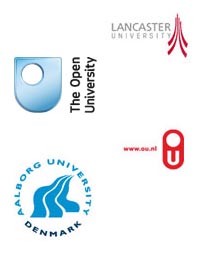

Information Aggregation in Networked Learning: The Human Factor and Serendipity
Rita Kop, National Research Council of Canada, Moncton, NB, Canada
The Web is changing and emergent technologies on the Web provide new options for learners to aggregate and engage with information. Learners can take control over their information steam and be proactive in the search for valuable information. The abundance of information makes that choices need to be made about what is valuable and what not, while the low level of teacher presence on open online networks increases the self-directed nature of this task for learners. Learning technologists started the research, design and development of personal learning environments (PLEs) that include predictive technologies to aid learners with the management of their learning in an open networked environment. Designers and developers are working on information recommender systems, using learning analytics and visualization techniques, to present learners with information relevant to their learning. Questions are being raised, however, about the usefulness of these systems for the advancement of learning. The low level of teacher presence on open networked learning networks will influence the level of reflection and critical engagement with information by learners, and is seen as a challenge to depth of learning. It is argued that to counter balance this, critical factors in information gathering would be the level of serendipity and human mediation.
This paper will highlight some challenges and opportunities in the shaping of information streams effective to learning. The aim of our research was to find out how people might position themselves at the centre of their information gathering process and how microblogging tool Twitter, in combination with RSS, shaped by human connections and interactions, might provide them with a reflection-inducing stream of information, in order to at times surprise and challenge them. We will highlight these aspects through the lens of research carried out during a Massive Open Online Course on Personal Learning Environments Networks and Knowledge (PLENK2010) in the fall of 2010. This paper will use a small case-study in the use of Twitter on PLENK2010 to investigate how human interaction might aid the increase of levels of serendipity in open networked learning. Special consideration will be given to serendipity in algorithm-based recommender systems for learning.
Keywords
Serendipity, networked learning, learning analytics, predictive analytics, open learning, analytics
| About NLC | Welcome Messages | 2012 Conference Proceedings | Conference Organisation |Invited Speakers |Proceedings Handbook | Past Conference Proceedings | Exploring the Theory, Pedagogy and Practice of Networked Learning |Contact |